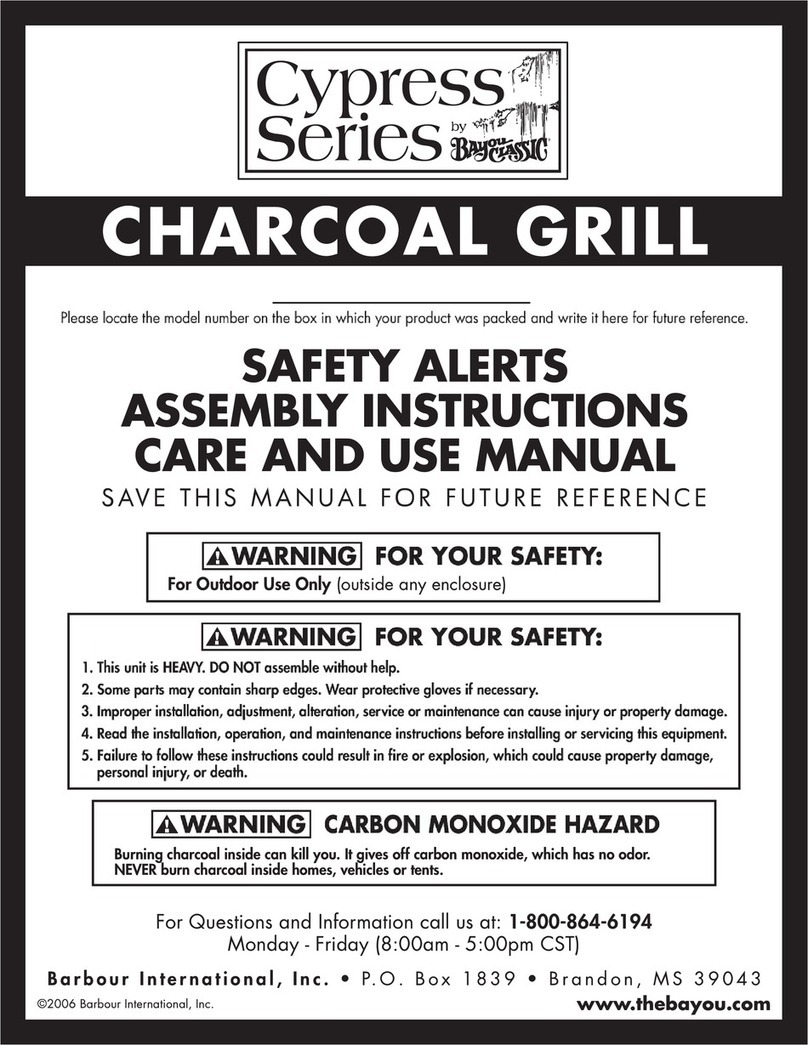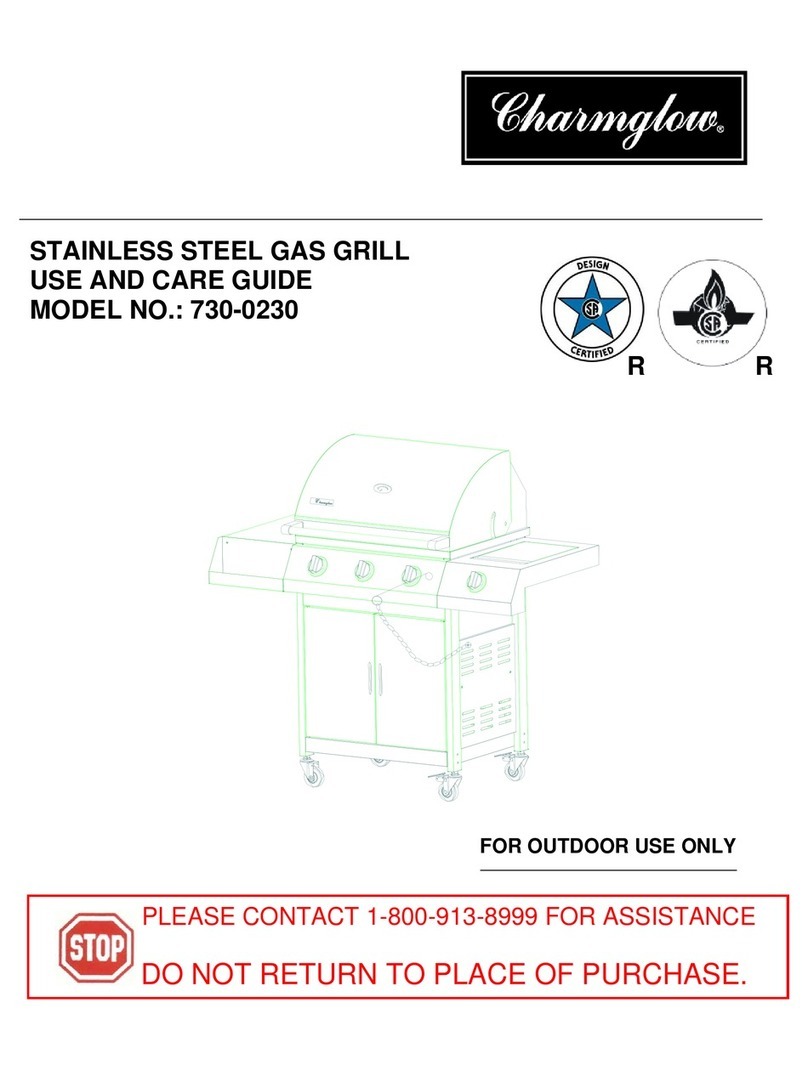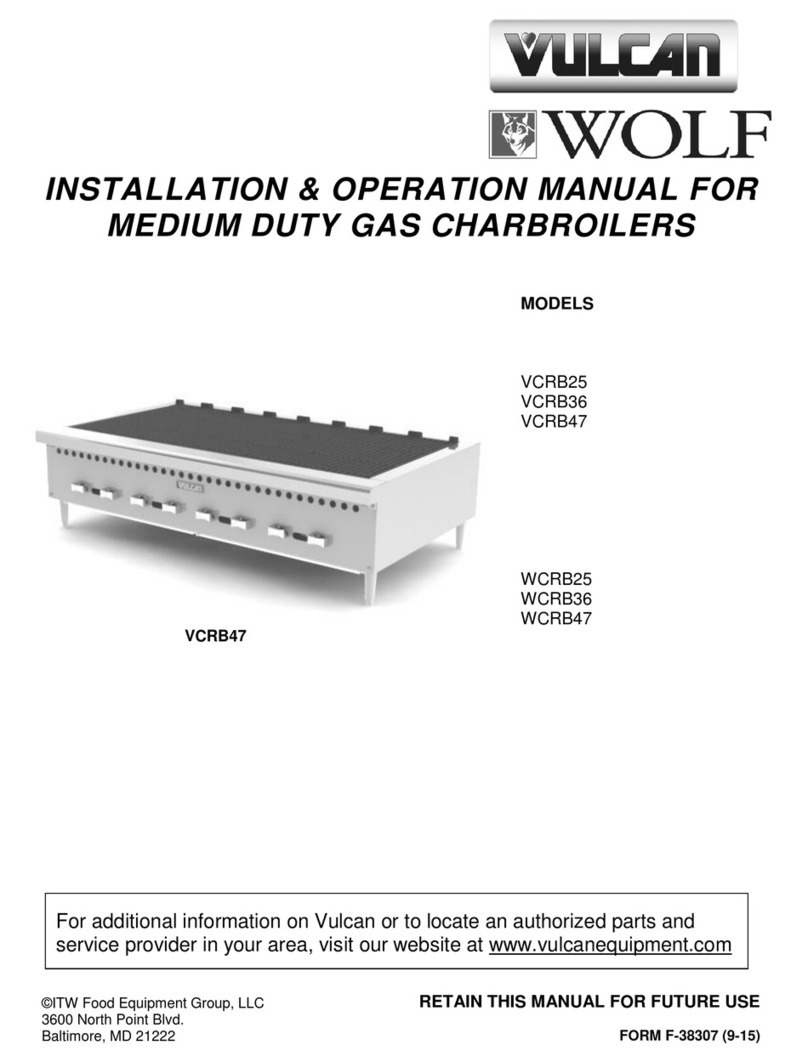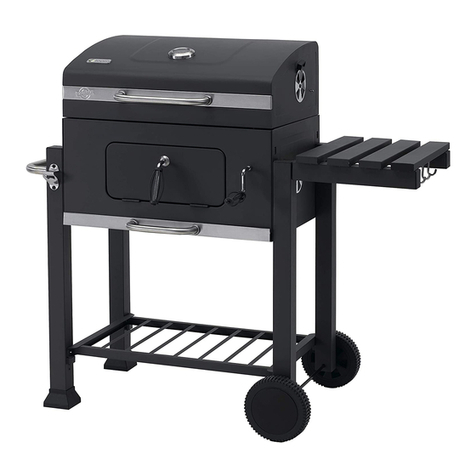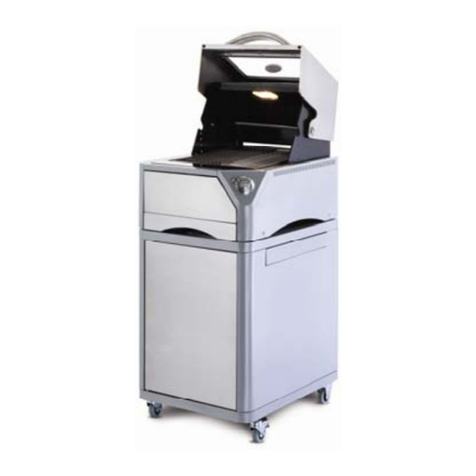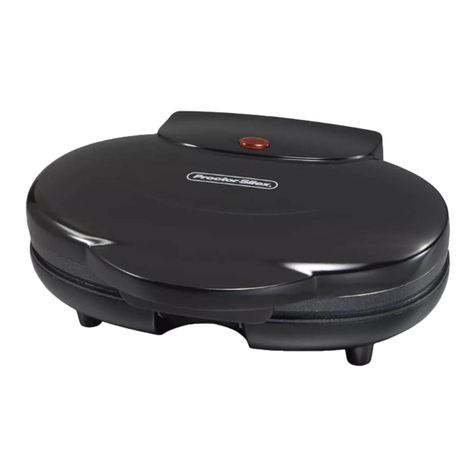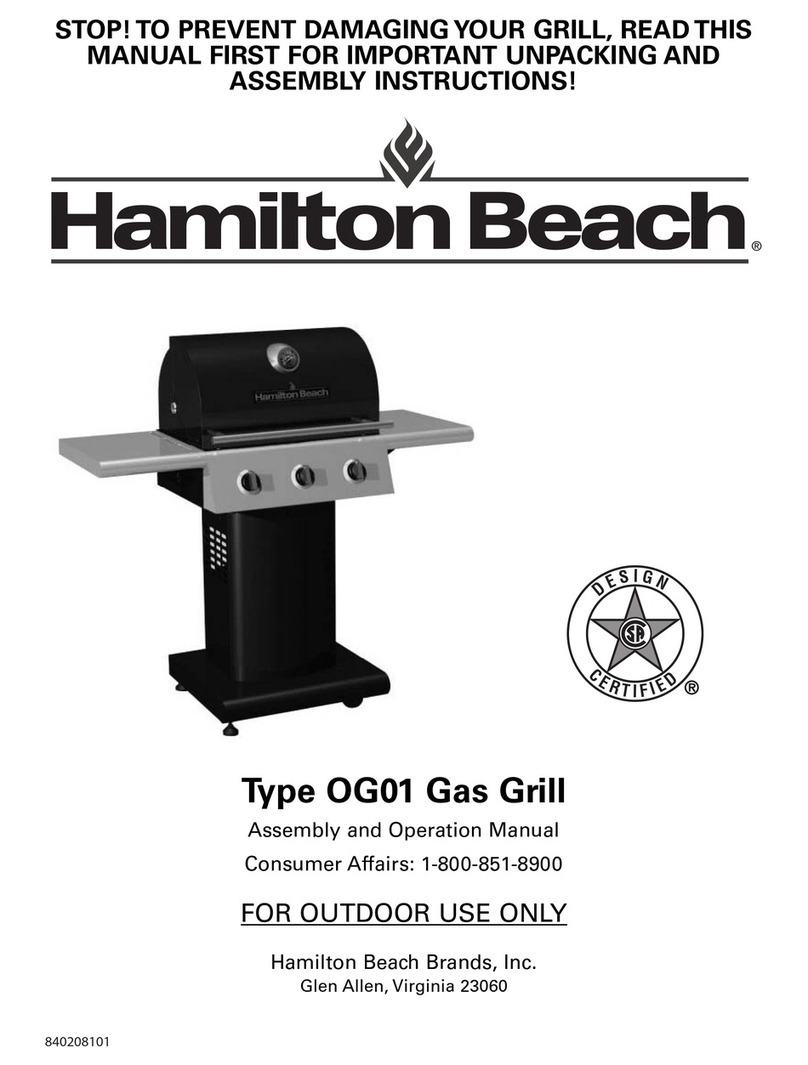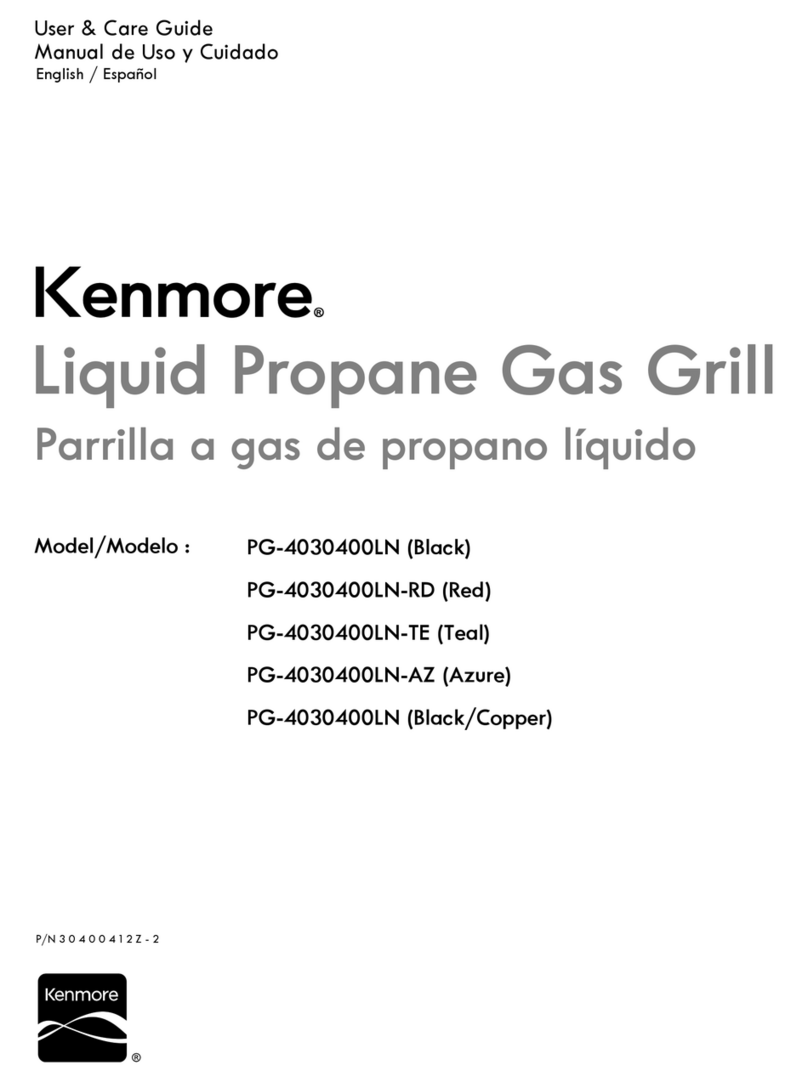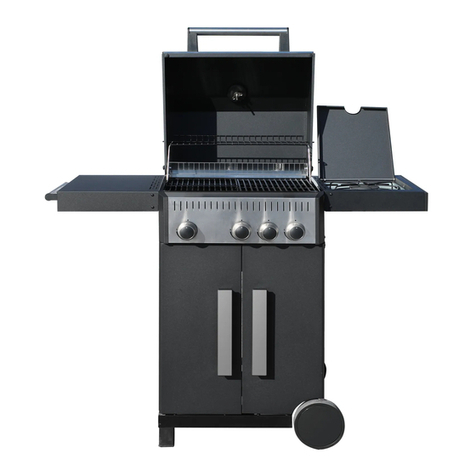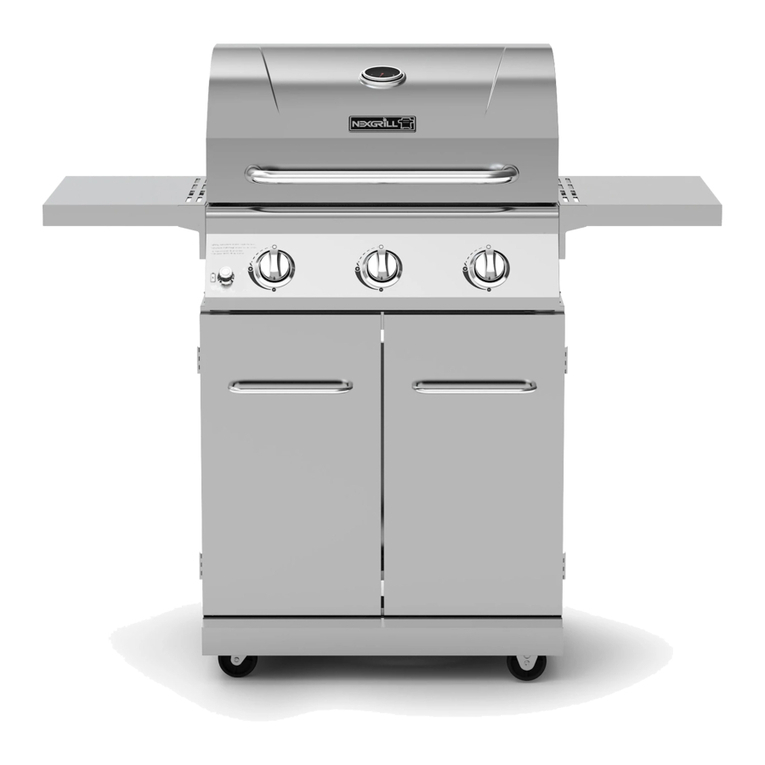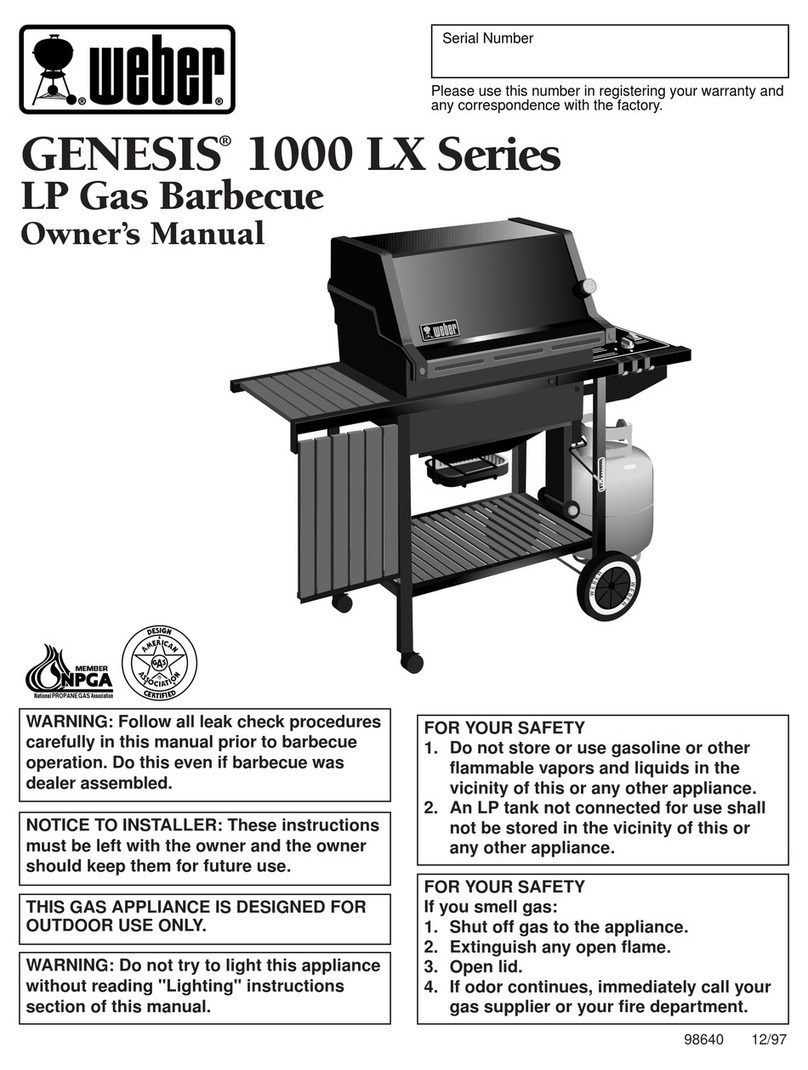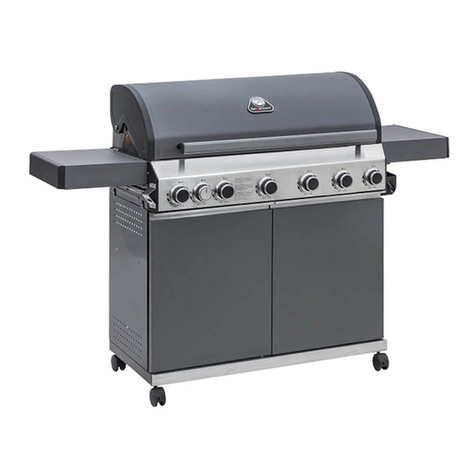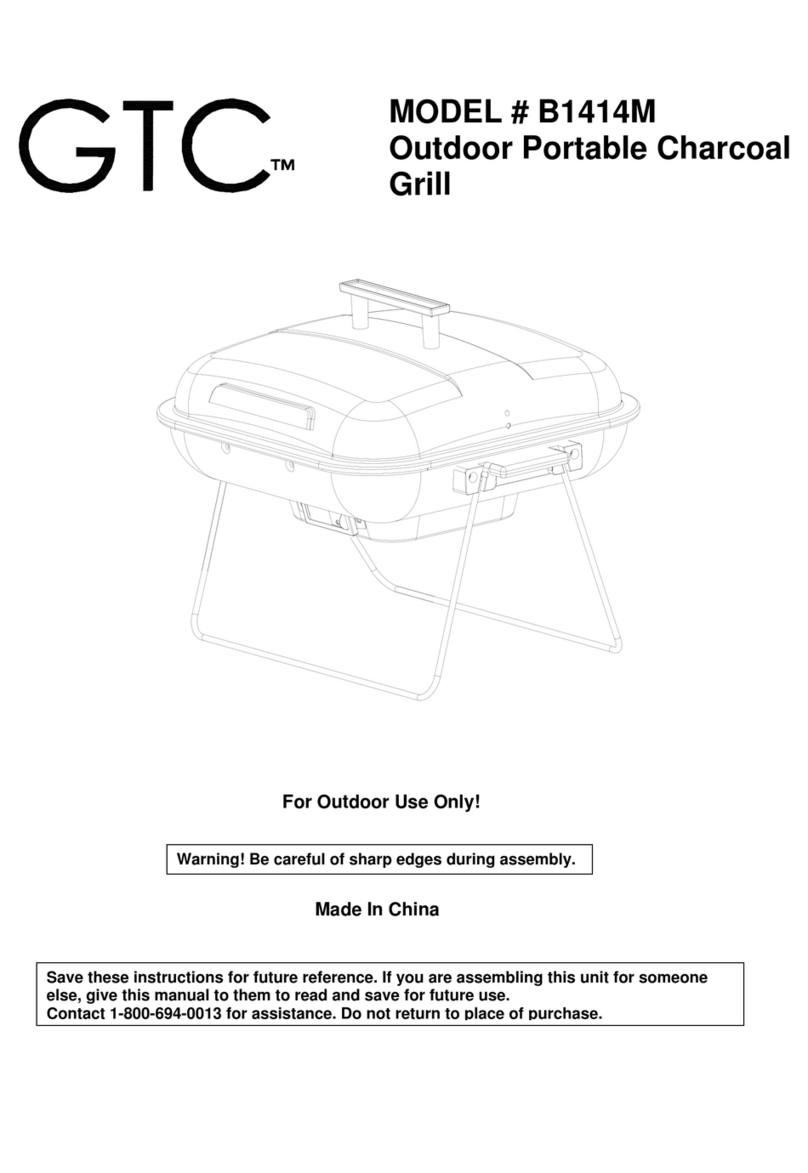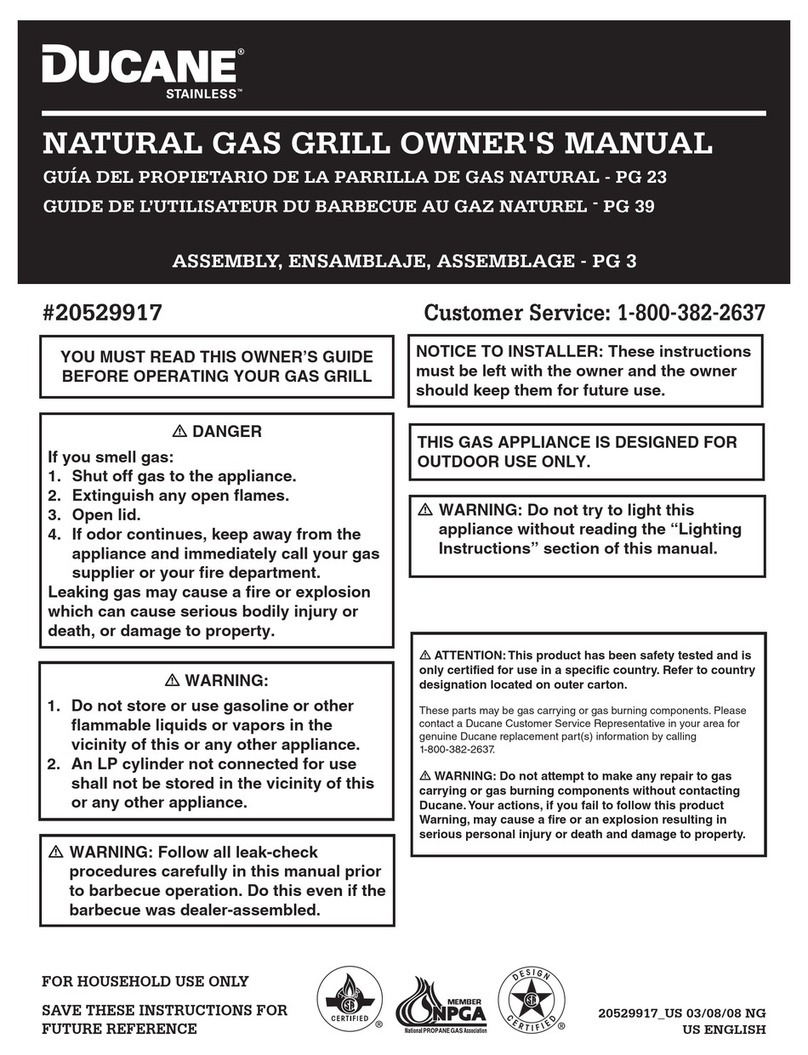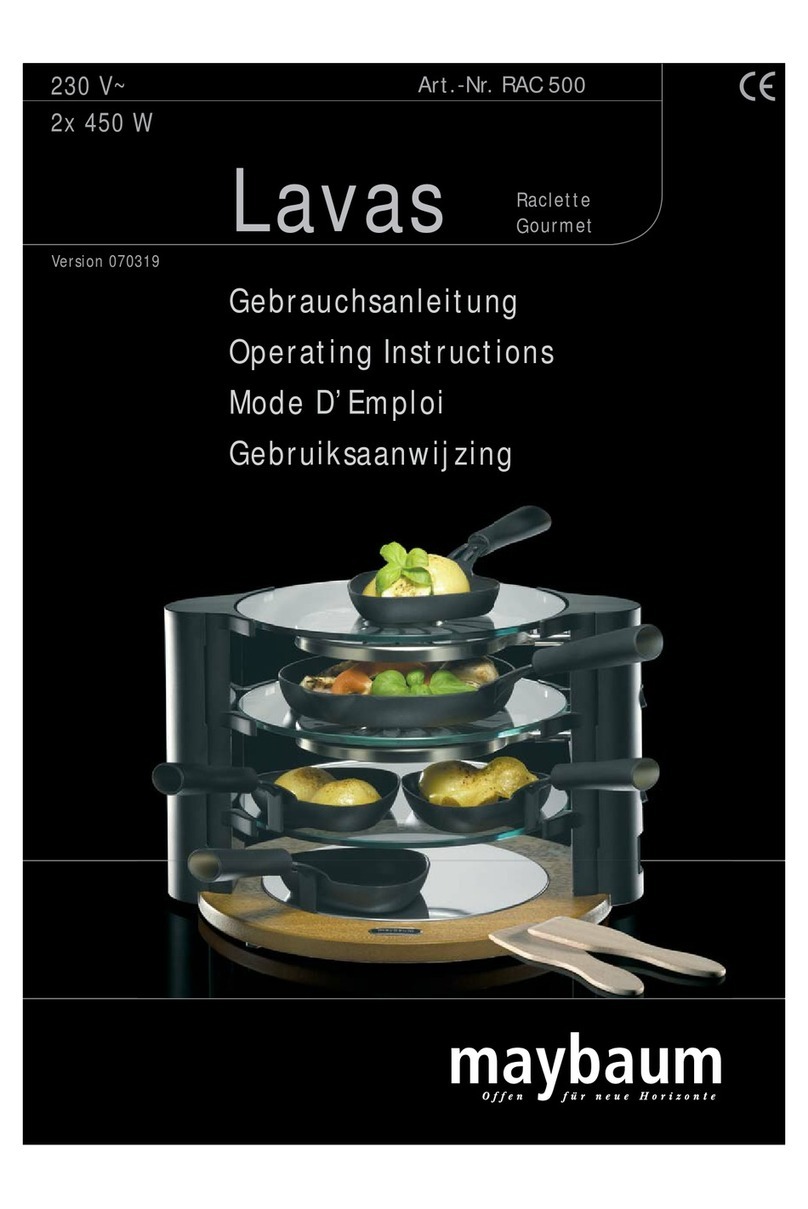
TROUBLE-SHOOTING
WARRANTY
Still have questions? Contact Barbour International, Inc. customer service
at 1-800-736-8028, or visit www.bayouclassic.com
11
Burner will not light
Burner lights, but has
very small/poor quality
(sooty) flame
Flame dramatically
reduces, and LP cylinder
has frost on it.
Hissing or gurgling
sounds coming from
appliance
Flame has gone out
Symptom Cause Possible Solution
Obstruction in the burner
LP tank has low fuel
LP tank has low fuel
Too windy
Gas Flow Limiting Device has
activated
Extended cooking on HIGH
Damaged or leaking hose and
regulator assembly
Not enough gas flow from tank
Part of appliance is damaged
Inspect burner. Wash out and dry if necessary.
Use a tank fill gauge to always know gas level.
If gas is too low to operate, refill or exchange tank.
Use a tank fill gauge to always know gas level.
If gas is too low to operate, refill or exchange tank.
Check wind direction and wait for wind to die
down, or move appliance away from windy areas.
Completely turn off (close) the LP Cylinder Valve
and the Brass Valve to prevent any gas flow. Wait
30 seconds and repeat steps for lighting.
Swap to a full LP tank. If you continue cooking with
the same LP tank, stop cooking for a few minutes and
then start again operating at MEDIUM setting.
Turn appliance off, and wait for it to cool down.
Perform Gas Leak Test to confirm gas leak. Replace
any damaged or faulty parts.
Turn up (open) LP Cylinder Valve all the way.
Inspect LP tank, burner, and HVR assembly for
damage. Replace any damaged or faulty parts.
Moisture in the burner Turn appliance off, and wait for it to cool down.
Detach the hose and pour out water.
Poor oxygen/gas mixture Adjust Brass Valve to obtain optimum blue flame.
Barbour International, Inc. (“Vendor”) warrants to the original retail purchaser of this appliance and no other person, that if this appliance is
assembled and operated in accordance with the printed instructions accompanying it, then for a period of one (1) year from the date of purchase, all parts
in such appliance shall be free from defects in material and workmanship. Vendor may require reasonable proof of your date of purchase from an
authorized retailer or distributor. Therefore, you should retain your sales slip or invoice. This Limited Warranty shall be limited to the repair or replacement
of parts, which prove defective under normal use and service and which Vendor shall determine in its reasonable discretion upon examination to be
defective. Before returning any parts, you should contact Vendor’s Customer Service Department using the listed contact information. If Vendor confirms,
after examination, a defect covered by this Limited Warranty in any returned part, and if Vendor approves the claim, Vendor will replace such defective
part without charge. If you return defective parts, transportation charges must be prepaid by you. Vendor will return replacement parts to the original retail
purchaser, freight or postage prepaid.
This Limited Warranty does not cover any failures or operating difficulties due to accident, abuse, misuse, alteration, misapplication, improper installation
or improper maintenance or service by you or any third party, or failure to perform normal and routine maintenance on the appliance, as set out in
this owner’s manual. In addition, the Limited Warranty does not cover damage to the finish, such as scratches, surface chips and cracks, discoloration, rust
or other weather damage, after purchase.
This Limited Warranty is in lieu of all other express warranties. Vendor disclaims all warranties for products that are purchased from sellers other that authorized
retailers or distributors. AFTER THE PERIOD OF THE ONE (1)-YEAR EXPRESS WARRANTY, VENDOR DISCLAIMS ANY AND ALL IMPLIED WARRANTIES,
INCLUDING WITHOUT LIMITATION THE IMPLIED WARRANTIES OF MERCHANTABILITY AND FITNESS FOR A PARTICULAR PURPOSE. FURTHER,
VENDOR SHALL HAVE NO LIABILITY WHATSOEVER TO PURCHASER OR ANY THIRD PARTY FOR ANY SPECIAL, INDIRECT, PUNITIVE, INCIDENTAL, OR
CONSEQUENTIAL DAMAGES. Vendor assumes no responsibility for any defects caused by third parties. This Limited Warranty gives the purchaser specific
legal rights; a purchaser may have other rights depending upon where he or she lives. Some jurisdictions do not allow the exclusion or limitation of special,
incidental or consequential damages, or limitations on how long a warranty lasts, so the above exclusion and limitations may apply to you.
Vendor does not authorize any person or company to assume for it any other obligation or liability in connection with the sale, installation, use, removal,
return, or replacement of its equipment, and no such representations are binding on Vendor.














